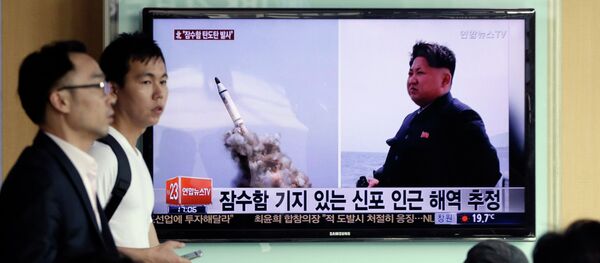"We note a growing level of sophistication among malicious cyber actors, including non-state and state-sponsored actors," reads a joint statement from the US-Japan Cyber Defense Policy Working Group.
The new extension of the US cyber defense umbrella to cover Japan is part of a series of guidelines to deepen the relationship between the country and the US that were unveiled in April and cemented with Prime Minister Shinzo Abe's trip to Washington at the end of that month.
Pension Attack Shows Japan's Vulnerability
Both China and North Korea are seen as potential sources of cyber threats in the eyes of Japan, which, relative to the United States, has been slower to build a robust cyber defense program.
While more than 6,000 people at the Pentagon are working on US cyber defense, Japan has a corps of only about 90 people in its cyber defense unit, a Japanese Defense Ministry official told reporters on Thursday.
Cyberattacks are on the rise as Japan prepares to host the 2020 Olympics In Tokyo. Indeed, just two days after the cyber-alliance was announced, Japan suffered a major hack on its pension service's systems. The personal information of 1.25 million people was leaked, including names, addresses, and pension IDs, the Japan Times reported.
The virus was reportedly spread through virus-laden email attachment sent to pension service employees. The attack did not penetrate the core of the system which stores individuals’ financial details, however.
"We feel an extremely grave responsibility over this," the president of Japan's Pension Service, Toichiro Mizushima, told reporters on Monday. "We will make the utmost efforts not to cause trouble to our customers."
A previous incident of botched record-keeping in 2007 left millions of pension premium payments unaccounted for, and was a major factor in the defeat of Prime Minister Abe's Liberal Democratic party in subsequent Upper House elections.
Tighter Japan-US Relations Challenge China, North Korea
The new guidelines for the US-Japanese military alliance include, for example, the elimination of geographical restrictions on where the two military powers can act together, a shift in military build up towards Japan and the Pacific, and, more generally, US support for Japan in taking on more of a regional military leadership role.
The new, more robust military partnership creates a counterbalance to what’s seen as China's growing dominance in the region, particularly as territorial disputes between Japan and China in the South China sea have heated up.
On April 6, the US Defense Department announced it would locate 60% of its military fleet to the Pacific-Indian Ocean, with the newest and most capable weapons systems first going to the Asia-Pacific region.




